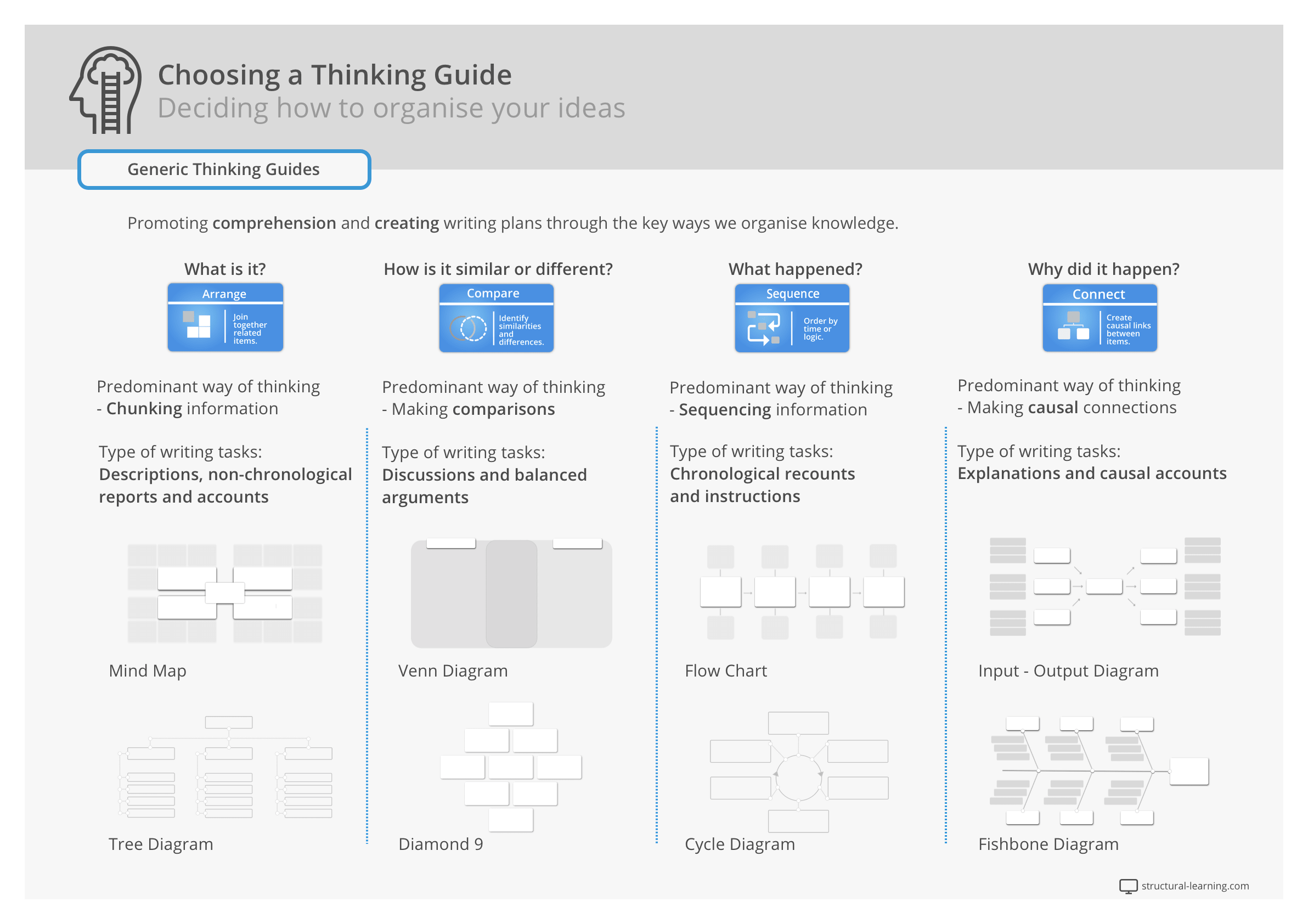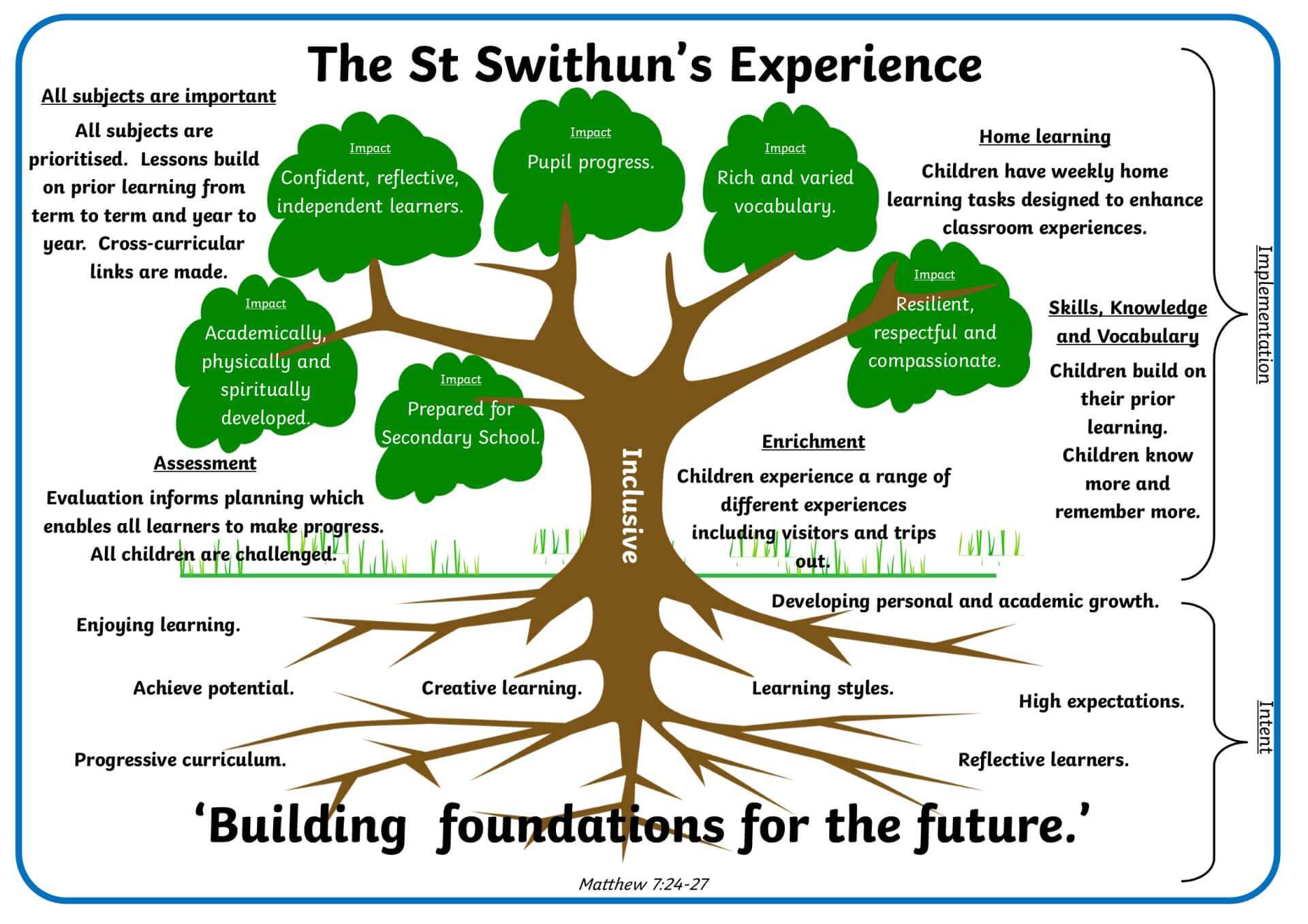Intent, Implementation and Impact: A curriculum guide
Are you embarking on a curriculum redesign? This article outlines some of the principles Ofsted look for in a broad and balanced curriculum.


Are you embarking on a curriculum redesign? This article outlines some of the principles Ofsted look for in a broad and balanced curriculum.
The 3 'I's' of education or 'Intent, Implementation and Impact' have been derived from the Ofsted inspection framework 2019. Intent indicates what is taught in schools and why it is taught. Implementation is to apply a framework within an institutional context to help children thrive and impact shows what the results will be and how something is going to make a difference.
This language has been used a lot when talking about the engagement of pupils, in this article we will attempt to unpick what it actually means and how you can design for curriculum impact. It's one thing making your curriculum intentions clear, but how do you make sure that your disadvantaged pupils and higher performing pupils are both developing their cognitive skills? If your teaching staff are in the process of rethinking how are you deliver a broad curriculum approach then you need to explore the Universal Thinking Framework. Our tools and resources will enable school leaders to build the background knowledge of their pupils alongside the academic skills needed to become lifelong learners.
Since September 2019, Ofsted inspectors are spending less time with the senior leaders. They are talking more to the middle leaders about curriculum intent, implementation and impact and they are more interested to know what happens in the classroom. Hence, it is much needed than ever that the middle leaders are prepared and confident. Many subject leaders have been questioned by inspectors and weren't ready for depth needed in the 'deep dives'. Just to remind us, the following are the four inspection categories of Ofsted:

This category has 3 ‘I’s: Intent, Implementation, Impact that work as subcategories and are not separately graded. The category 'Quality of education' requires more time to familiarise oneself with and is likely to cause the most interest in the new framework.
The New Inspection Framework emphasises that each primary school needs to have equal or higher expectations, providing a balanced curriculum for all.
There appears to be more focus on making the knowledge-rich and varied curriculum; nonetheless, the new framework strongly insists that the learning curriculum must not be limited to, or confused with, merely memorising facts. There must not be excessive and unnecessary attempts to ask students to learn long lists or glossaries of disconnected facts.
The other main curriculum aspect is that it must provide cultural capital demonstrated in the handbook as the fundamental knowledge that students need to be informed citizens, providing them with the best that has been said and thought and helping them to show the best of achievement and human creativity.
There is also more emphasis on teaching the inclusion of skills in the curriculum, specifically regarding preparing students for the future practice of learning and employment.
The message of depth about Curriculum Intent that is delivered clearly and loudly throughout the framework is that:

The Ofsted's chief inspector will judge schools for taking a radical curriculum continuity approach fairly. Ofsted gives positive feedback when school leaders build an effective curriculum design with pertinent curriculum intentions, coverage, sequencing and structure and implement it effectively. The evidence inspectors will collect, from dialogues with the senior and subject leaders, will mainly focus on education through curriculum intent and curriculum construction using appropriate and specific content, sequencing and the endpoints of the content.
Ofsted does not prefer any specific way to present the material. Teachers can apply any educational approach to present the material, according to the students' key stage and the nature of key concepts being taught to the students.
Interestingly, the inspectors give special attention to how teachers will build learners’ interest and confidence in reading. In the early education classrooms/ 1 3-year key stage levels, students' ability to read materials is closely matched to their phonics knowledge.
Special attention is given to the reading, under the headings of Impact and Implementation. The handbook also clarifies that in good schools students will be able to effectively apply mathematical procedures, concepts and knowledge, according to their age.
Inspectors will judge implementation by drawing evidence of curriculum implementation from discussions with subject leaders, classroom teachers, through observing and interviewing the students, through reviewing contextual planning, schemes of work and performing scrutiny of the students’ work. Even if good work is not fully implemented, Inspectors might give positive feedback for finding evidence of attention to curriculum implementation in progress.

Impact: Ofsted inspectors will assess whether or not the learners develop detailed skills and knowledge across the curriculum and achieve well as a curriculum impact.
But the emphasis isn’t only on data. The new Ofsted framework also establishes that there should be an emphasis on doing tasks that ‘allow [students] to get to destinations for meeting their aspirations, interests, and the intent of their course of study. The Inspectors don't judge impact solely on basis of academic success, they have more ways to define success.
The impact will not be judged solely on basis of schools’ internal data of assessment as evidence. The inspectors look at nationally created performance data that is available in the IDSR (inspection data summary report).
The Inspectors also look for first-hand evidence of how students are performing. They draw together evidence from the interviews (including dialogues with students about what do they remember about the content they studied in the classroom), scrutinise work, make observations and review curriculum quality through students’ exercise books, folders and nationally published information about the goals pupils have achieved before leaving the school. The inspectors will listen to how pupils read in primary schools.
Teachers need to allow sufficient learning opportunities according to a child’s stage of development and age. Practitioners with sufficient knowledge of child development understand how to assist children as they refine and practise their knowledge and skills in each area of learning and development. They support young learners, using high-quality teaching practices and a balance of child-initiated and adult-led learning experiences. The curriculum in schools must include authentic and timely assessment practices involving educational activities suitable for the eventual pupil outcomes.

Many schools have become well accustomed to the concept of knowledge organisers. These one-page documents comprise the detailed knowledge covered in any particular topic. What's missing? If the knowledge organiser contains the 'what?' of the curriculum (the to be learnt material), what's missing is the 'how?' of learning.
The Universal Thinking Framework addresses the application of skills within the curriculum. The taxonomy enables teachers and pupils to talk about the learning process and understand how to move their thinking forward. It allows teachers to think about the embedding of knowledge and how the academic content can be fully covered.
The framework can be used at departmental planning meetings to talk about how a child is going to learn a particular domain of knowledge. This can be used as the intent, you can demonstrate how are you are going to promote a deeper understanding in your classroom.

The frameworks learning actions guide children through a course of action. Each of those actions has a corresponding set of key questions that can be used to interrogate the essential knowledge. Over time, children begin to understand what these actions mean and can engage in the learning process more effectively.
Additional questions can be integrated into the sequence of learning and the children's journey can be adapted with new lines of enquiry. On a practical level, the icons of the actions can be integrated into PowerPoint, worksheets and also the children's desks.
More recently, we have turned our attention to how the framework can be used as an assessment tool. Using the learning actions along with the key question can help teachers very quickly develop assessment tools that check for deeper knowledge. These academic skills enable pupils to understand what is meant by 'knowing' something.
For example, developing the accumulation of knowledge is one thing but what purposeful activities can you use this knowledge for? The framework allows teachers to check for understanding during the learning process, here are some examples:

In primary education, understanding and demonstrating curriculum intent, implementation, and impact is crucial for preparing for school inspections. Here are nine fictional examples across various subject areas:
These examples demonstrate how schools can clearly articulate their curriculum intent, implement it effectively, and measure its impact. By doing so, they can prepare for inspections and ensure they are providing a high-quality education for their students.
Key Insights:

In the field of early years education, the national curriculum sets out the curriculum content and learning goals that children should achieve. Intent, implementation, and impact are key concepts that help to ensure that the curriculum is effective in promoting the development of children. Intent refers to the goals and learning outcomes that inform the curriculum content. It is important to ensure that these goals
The 3 'I's' of education or 'Intent, Implementation and Impact' have been derived from the Ofsted inspection framework 2019. Intent indicates what is taught in schools and why it is taught. Implementation is to apply a framework within an institutional context to help children thrive and impact shows what the results will be and how something is going to make a difference.
This language has been used a lot when talking about the engagement of pupils, in this article we will attempt to unpick what it actually means and how you can design for curriculum impact. It's one thing making your curriculum intentions clear, but how do you make sure that your disadvantaged pupils and higher performing pupils are both developing their cognitive skills? If your teaching staff are in the process of rethinking how are you deliver a broad curriculum approach then you need to explore the Universal Thinking Framework. Our tools and resources will enable school leaders to build the background knowledge of their pupils alongside the academic skills needed to become lifelong learners.
Since September 2019, Ofsted inspectors are spending less time with the senior leaders. They are talking more to the middle leaders about curriculum intent, implementation and impact and they are more interested to know what happens in the classroom. Hence, it is much needed than ever that the middle leaders are prepared and confident. Many subject leaders have been questioned by inspectors and weren't ready for depth needed in the 'deep dives'. Just to remind us, the following are the four inspection categories of Ofsted:

This category has 3 ‘I’s: Intent, Implementation, Impact that work as subcategories and are not separately graded. The category 'Quality of education' requires more time to familiarise oneself with and is likely to cause the most interest in the new framework.
The New Inspection Framework emphasises that each primary school needs to have equal or higher expectations, providing a balanced curriculum for all.
There appears to be more focus on making the knowledge-rich and varied curriculum; nonetheless, the new framework strongly insists that the learning curriculum must not be limited to, or confused with, merely memorising facts. There must not be excessive and unnecessary attempts to ask students to learn long lists or glossaries of disconnected facts.
The other main curriculum aspect is that it must provide cultural capital demonstrated in the handbook as the fundamental knowledge that students need to be informed citizens, providing them with the best that has been said and thought and helping them to show the best of achievement and human creativity.
There is also more emphasis on teaching the inclusion of skills in the curriculum, specifically regarding preparing students for the future practice of learning and employment.
The message of depth about Curriculum Intent that is delivered clearly and loudly throughout the framework is that:

The Ofsted's chief inspector will judge schools for taking a radical curriculum continuity approach fairly. Ofsted gives positive feedback when school leaders build an effective curriculum design with pertinent curriculum intentions, coverage, sequencing and structure and implement it effectively. The evidence inspectors will collect, from dialogues with the senior and subject leaders, will mainly focus on education through curriculum intent and curriculum construction using appropriate and specific content, sequencing and the endpoints of the content.
Ofsted does not prefer any specific way to present the material. Teachers can apply any educational approach to present the material, according to the students' key stage and the nature of key concepts being taught to the students.
Interestingly, the inspectors give special attention to how teachers will build learners’ interest and confidence in reading. In the early education classrooms/ 1 3-year key stage levels, students' ability to read materials is closely matched to their phonics knowledge.
Special attention is given to the reading, under the headings of Impact and Implementation. The handbook also clarifies that in good schools students will be able to effectively apply mathematical procedures, concepts and knowledge, according to their age.
Inspectors will judge implementation by drawing evidence of curriculum implementation from discussions with subject leaders, classroom teachers, through observing and interviewing the students, through reviewing contextual planning, schemes of work and performing scrutiny of the students’ work. Even if good work is not fully implemented, Inspectors might give positive feedback for finding evidence of attention to curriculum implementation in progress.

Impact: Ofsted inspectors will assess whether or not the learners develop detailed skills and knowledge across the curriculum and achieve well as a curriculum impact.
But the emphasis isn’t only on data. The new Ofsted framework also establishes that there should be an emphasis on doing tasks that ‘allow [students] to get to destinations for meeting their aspirations, interests, and the intent of their course of study. The Inspectors don't judge impact solely on basis of academic success, they have more ways to define success.
The impact will not be judged solely on basis of schools’ internal data of assessment as evidence. The inspectors look at nationally created performance data that is available in the IDSR (inspection data summary report).
The Inspectors also look for first-hand evidence of how students are performing. They draw together evidence from the interviews (including dialogues with students about what do they remember about the content they studied in the classroom), scrutinise work, make observations and review curriculum quality through students’ exercise books, folders and nationally published information about the goals pupils have achieved before leaving the school. The inspectors will listen to how pupils read in primary schools.
Teachers need to allow sufficient learning opportunities according to a child’s stage of development and age. Practitioners with sufficient knowledge of child development understand how to assist children as they refine and practise their knowledge and skills in each area of learning and development. They support young learners, using high-quality teaching practices and a balance of child-initiated and adult-led learning experiences. The curriculum in schools must include authentic and timely assessment practices involving educational activities suitable for the eventual pupil outcomes.

Many schools have become well accustomed to the concept of knowledge organisers. These one-page documents comprise the detailed knowledge covered in any particular topic. What's missing? If the knowledge organiser contains the 'what?' of the curriculum (the to be learnt material), what's missing is the 'how?' of learning.
The Universal Thinking Framework addresses the application of skills within the curriculum. The taxonomy enables teachers and pupils to talk about the learning process and understand how to move their thinking forward. It allows teachers to think about the embedding of knowledge and how the academic content can be fully covered.
The framework can be used at departmental planning meetings to talk about how a child is going to learn a particular domain of knowledge. This can be used as the intent, you can demonstrate how are you are going to promote a deeper understanding in your classroom.

The frameworks learning actions guide children through a course of action. Each of those actions has a corresponding set of key questions that can be used to interrogate the essential knowledge. Over time, children begin to understand what these actions mean and can engage in the learning process more effectively.
Additional questions can be integrated into the sequence of learning and the children's journey can be adapted with new lines of enquiry. On a practical level, the icons of the actions can be integrated into PowerPoint, worksheets and also the children's desks.
More recently, we have turned our attention to how the framework can be used as an assessment tool. Using the learning actions along with the key question can help teachers very quickly develop assessment tools that check for deeper knowledge. These academic skills enable pupils to understand what is meant by 'knowing' something.
For example, developing the accumulation of knowledge is one thing but what purposeful activities can you use this knowledge for? The framework allows teachers to check for understanding during the learning process, here are some examples:

In primary education, understanding and demonstrating curriculum intent, implementation, and impact is crucial for preparing for school inspections. Here are nine fictional examples across various subject areas:
These examples demonstrate how schools can clearly articulate their curriculum intent, implement it effectively, and measure its impact. By doing so, they can prepare for inspections and ensure they are providing a high-quality education for their students.
Key Insights:

In the field of early years education, the national curriculum sets out the curriculum content and learning goals that children should achieve. Intent, implementation, and impact are key concepts that help to ensure that the curriculum is effective in promoting the development of children. Intent refers to the goals and learning outcomes that inform the curriculum content. It is important to ensure that these goals